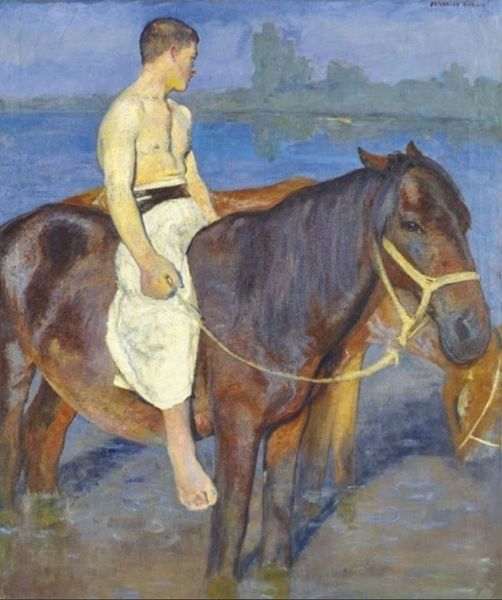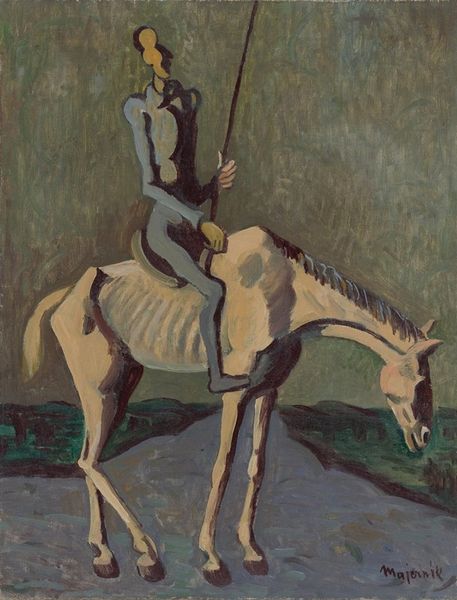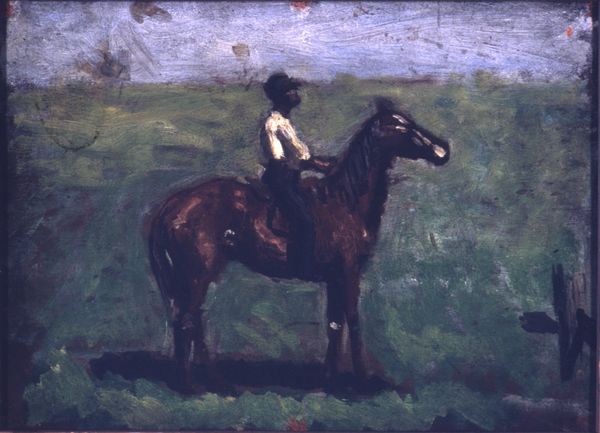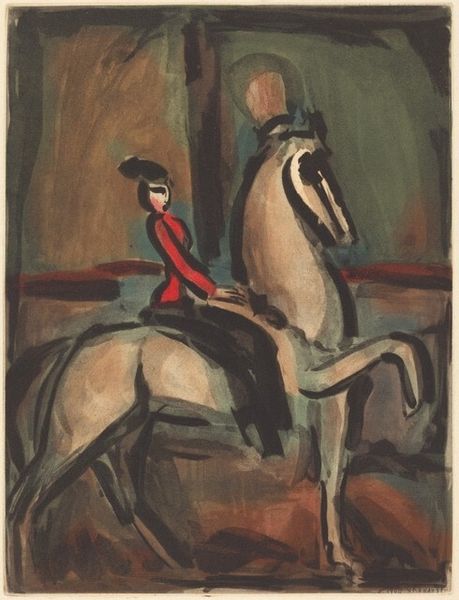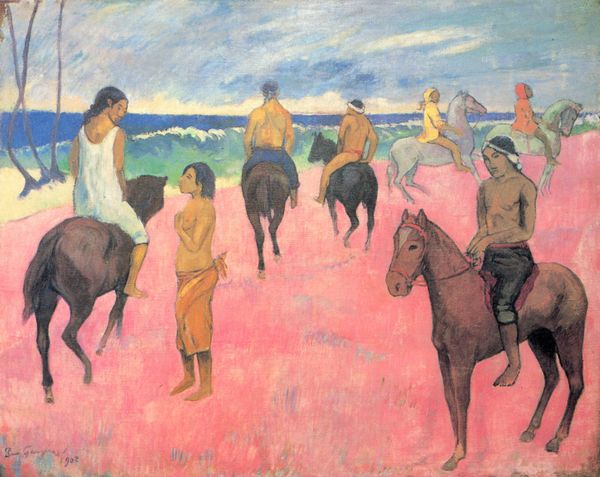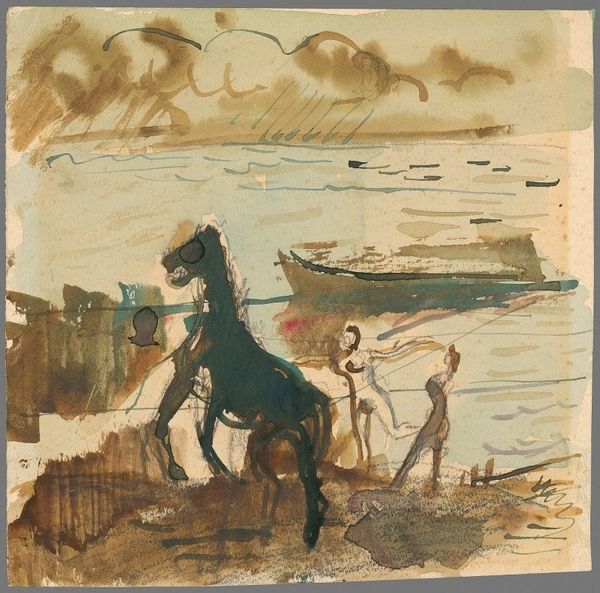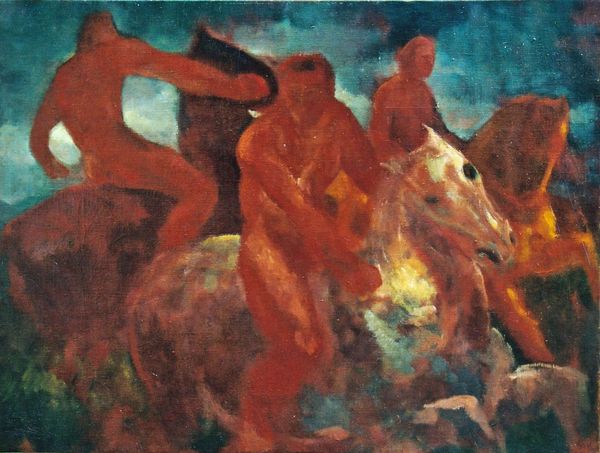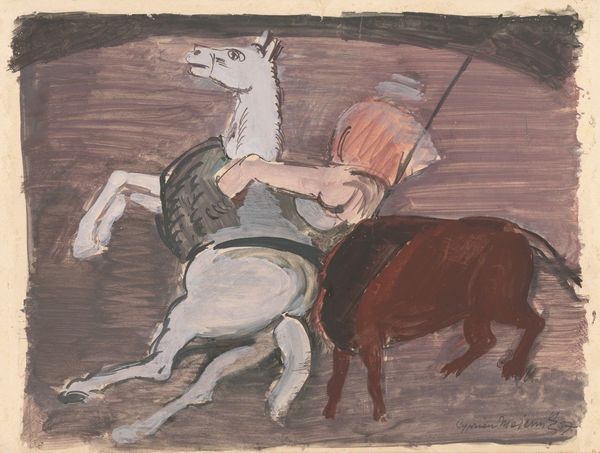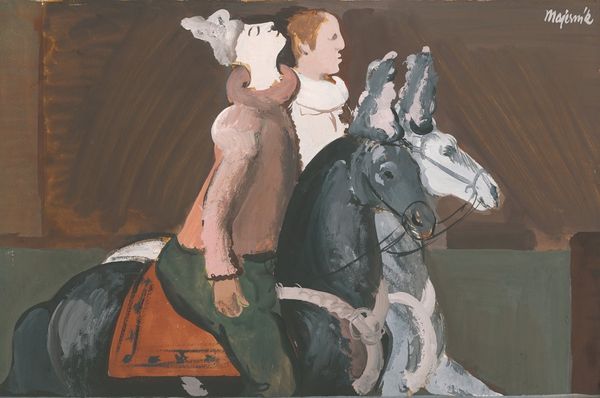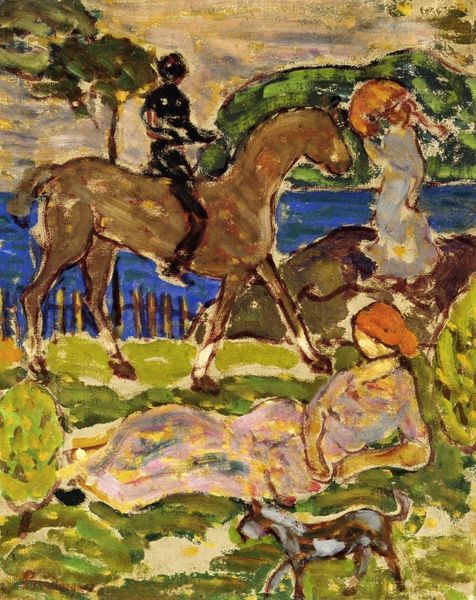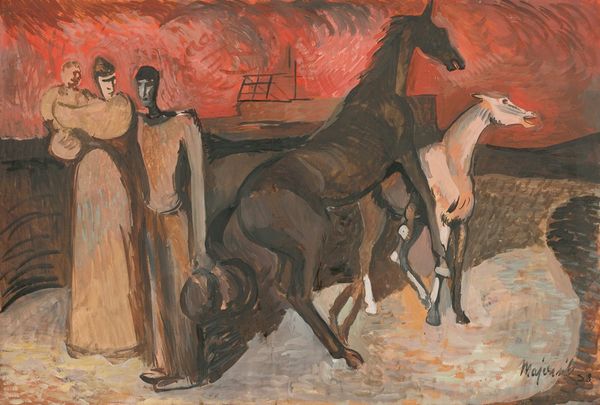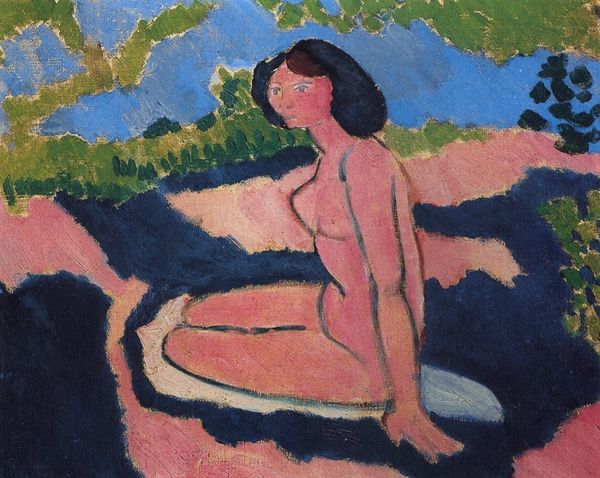
painting, oil-paint
#
portrait
#
painting
#
oil-paint
#
figuration
#
oil painting
#
animal portrait
#
portrait drawing
#
portrait art
#
fine art portrait
Copyright: Public domain
Editor: Fujishima Takeji's "An Amazon," painted in 1924, offers a rather captivating depiction of a woman on horseback. It strikes me as a particularly bold portrait, almost confrontational in its gaze. What social narratives were at play during its creation, especially considering its title and subject? Curator: That's an excellent point. "An Amazon" painted in 1924 resonates with the social and cultural shifts happening during that time. Post World War I, there's a visible emergence of women in more public spheres, a growing sense of female empowerment. The choice of title alludes to classical mythology but applied to a contemporary woman. How does the depiction of leisure here factor into the societal view? Editor: Leisure...well, I see a freedom of movement, her engaging in sport was likely a luxury afforded by the elite. Could this portrayal be a conscious commentary on class and leisure? Curator: Exactly. Consider Japonisme, which deeply influenced Takeji. Japanese woodblock prints often portrayed figures within a broader societal context. I’m seeing the red bathing suit drawing immediate attention to the woman. Do you think that the brightness stands out as commentary in itself? Editor: Possibly! Highlighting the modern attire in juxtaposition with classical art... Is the artist saying anything about where society has come from and what that meant in 1924? It also brings together that clash of Japanese and Western art styles in terms of themes and composition. Curator: It really does. What I appreciate most about viewing art in this manner, is realizing art doesn’t exist in a bubble! Its relationship with public culture, as influenced and expressed by sociopolitical events, helps to give further dimension and depth to our experiences viewing. Editor: It gives me a broader picture of the work’s cultural impact; how its creation has added to public imagery and in a way has it challenged, reinforced or altered public values over time. It's more than brush strokes; it’s about who we are.
Comments
No comments
Be the first to comment and join the conversation on the ultimate creative platform.
